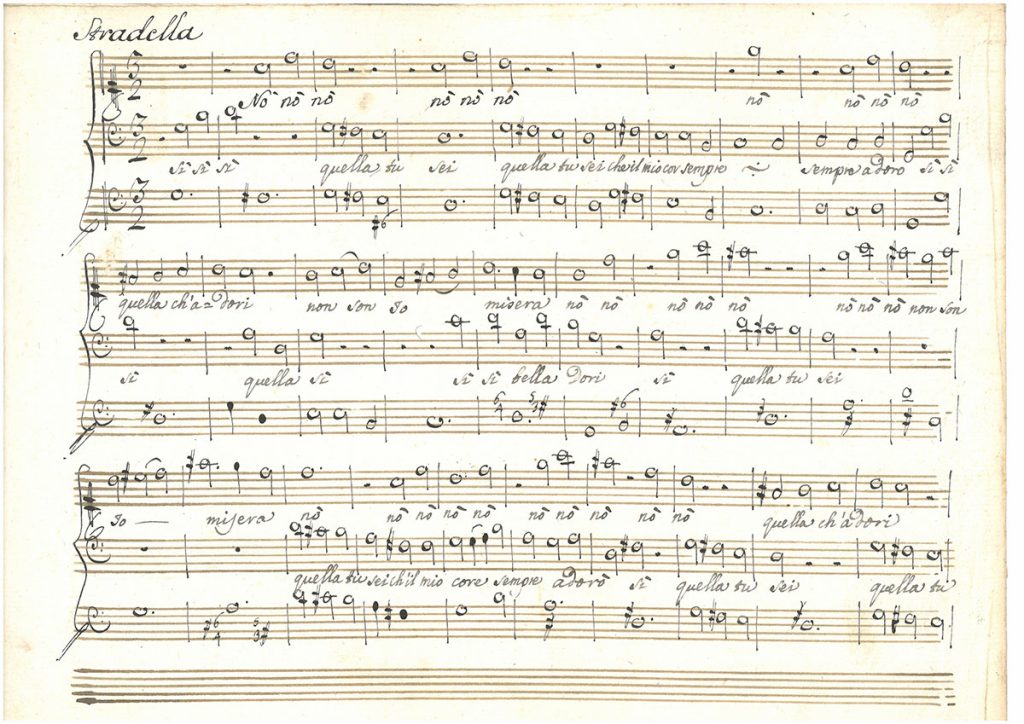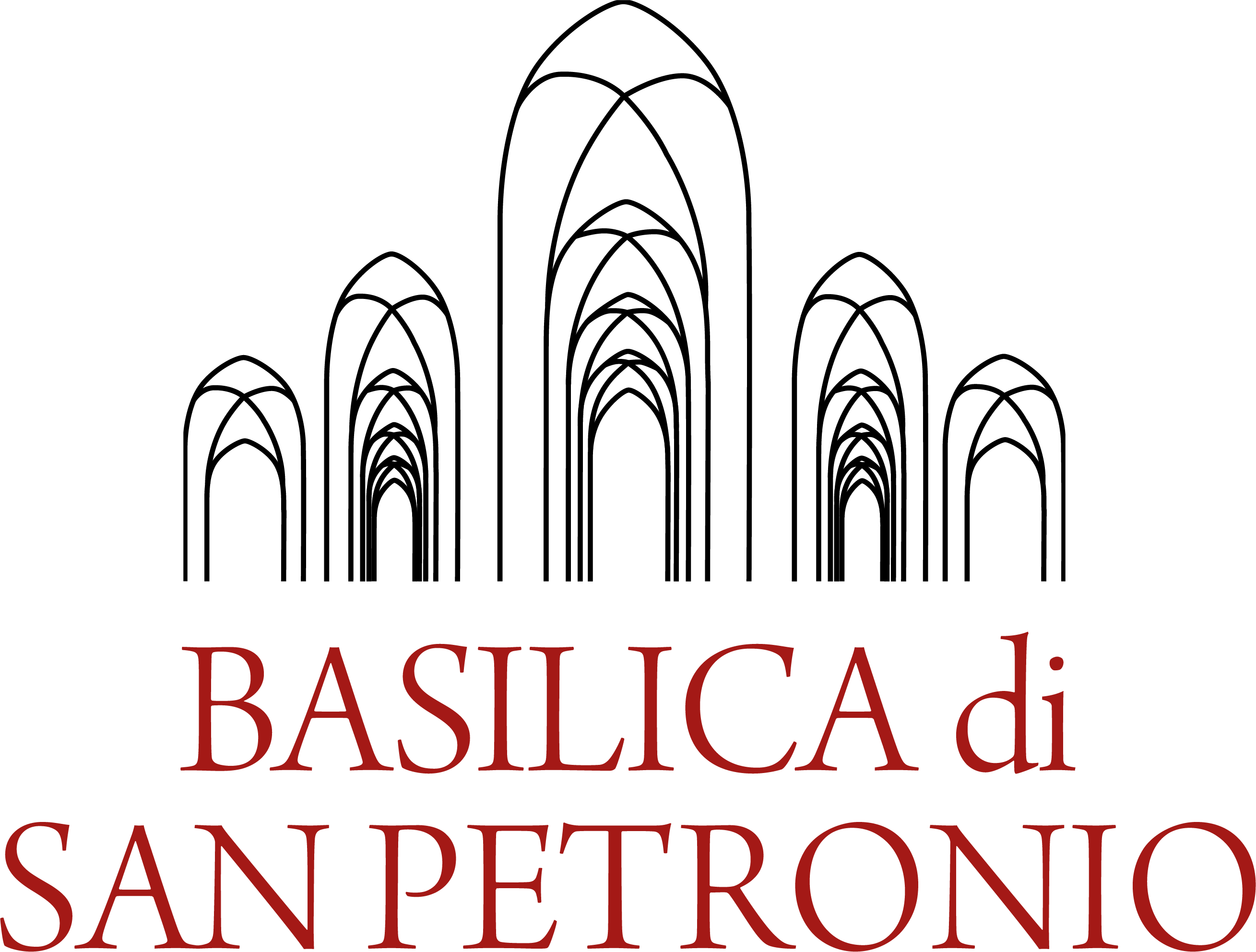Music Archive of the Basilica of San Petronio
For information write to archivio.musicale@basilicadisanpetronio.org

The collection preserved in the Music Archive of the Basilica of San Petronio attests to the production of the historic chapel, which since the mid-15th century has included some of the most renowned maestros and performers.
The collection was amassed through donations and bequests by the composers and their heirs, or through acquisitions. The most significant bequests include first of all the choir books belonging to Giovanni Spataro (wills from 1527 to 1540) and Maurizio Cazzati (1678), and the collections belonging to Giacomo Antonio Perti (1759) and to Giuseppe Maria Carretti (1774). These were followed by the bequests of Valerio Tesei (1794) and Giovanni Andrea Callisto Zanotti (1817).
Subsequent additions are not always connected to the Chapel or its maestros: these include the acquisitions of compositions by Stefano Antonio Sarti (1847-1848), sacred music formerly by Giuseppe Pilotti (since 1864) and compositions by Francesco Roncagli and other composers (1889); and finally, the donation (1911) by the heirs of the Tommaso Marchesi estate. All this music from the 19th to the 20th century is placed and listed in a new Modern Collection.
There are about 3,500 manuscripts and old editions in total, from the 15th to the 19th century. They mostly, but not exclusively, contain sacred music and are divided into broad categories of vocal and instrumental works by the great maestros of the Chapel: e.g. Giovanni Spataro, Andrea Rota, Maurizio Cazzati, Girolamo Giacobbi, Giovanni Paolo Colonna, Giacomo Antonio Perti and other notable composers such as, for example, Pierre Cadeac, Pierre Certon, Claude Goudimel, Cristóbal de Morales, Giovanni Pierluigi da Palestrina, Tomàs Luis da Victoria and also Gabrieli, Orlando di Lasso, Luca Marenzio, Claudio Merulo, Claudio Monteverdi, Cipriano de Rore, Orazio Vecchi, Domenico Gabrielli and Giuseppe Torelli.
This legacy has always been set in the context of Bolognese activity and production, a benchmark for sacred music: in Bologna there is evidence of scholae in the Middle Ages (at the University, from the early 15th century in the Basilica di San Petronio), music chapels, first of all from the 15th century onwards (in particular in the Basilica di San Petronio), music academies (in the 17th and 18th centuries and beyond, in particular the Accademia Filarmonica) and the Conservatory. Most of the maestros and composers in the Music Archive were always connected to the city’s main musical institutions. One of the most significant figures was Father Giovanni Battista Martini, a mainstay of Bolognese musical life in the 18th century.
The Basilica’s musical heritage also includes the liturgical codices prepared at the behest of the Bentivoglio family at the end of the 15th century (at the same time as the wooden choir by Agostino de’ Marchi da Crema and the first one of the two organs, the one by Lorenzo da Prato) and illuminated by various artists: in addition to a few contributions by the famous Taddeo Crivelli, Martino di Giorgio da Modena and Giovanni Battista Cavalletto are particularly prominent.
For a look at the Music Archives: profile, stages of formation, historical inventories
Oscar Mischiati, L’archivio musicale della Basilica di San Petronio a Bologna – nota informativa, in Vanitatis fuga, aeternitatis amor. Wolfgang Witzenmann zum 65. Geburtstag , «Analecta Musicologica», 2005, pp. 105-112
Alessandra Chiarelli, L’Archivio musicale di San Petronio in Bologna: cenni di studio e valorizzazione, in La musica in Chiesa: le raccolte musicali negli archivi ecclesiastici dell’Emilia Romagna, Modena, Mucchi, 2015, pp. 103-132
Alessandra Chiarelli, L’Archivio Musicale della Basilica di San Petronio: appunti in margine alla ricognizione e descrizione inventariale, in Archivi, Storia, Arte a Bologna. Per Mario Fanti, Bologna, BUP, 2023, pp. 115-134
(The information reported on this site is taken from these articles)
For other relevant topics
For the history of the Chapel
Osvaldo Gambassi, La Cappella musicale di S. Petronio: maestri, organisti, cantori e strumentisti dal 1436 al 1920, Florence, Olschki, 1987
For the history of the Basilica and the Fabbriceria Archives.
Please refer to the Historical Archives page.
For historical organs
Please refer to the writings of Oscar Mischiati and Luigi Ferdinando Tagliavini, in particular:
Oscar Mischiati, Luigi Ferdinando Tagliavini, Gli organi della Basilica di San Petronio in Bologna, revised and updated by Mario Fanti, Luigi Ferdinando Tagliavini, Lieuwe Tamminga, Bologna: Patron 2013
For illuminated liturgical codes.
Giordana Canova Mariani, I corali, in La basilica di San Petronio in Bologna texts by various authors, Bologna Fondazione Cassa di Risparmio, 2003 (second edition), II, pp. 249-267, in particular 249-250 and 264, and to the documentation and bibliography cited therein.
For some groups of sources of the main musicians attested in the musical collection
Franz Giegling, Giuseppe Torelli – Ein Beitrag zur Entwicklungsgeschichte des italienischen Konzert, Kassel: Bärenreiter 1949
R. Schnitzler, The Passion-Oratorios of Giacomo Antonio Perti, tesi di laurea, Ohio University, 1967
Frank Tirro, Renaissance Musical Sources in the Archive of San Petronio in Bologna, I: Giovanni Spataro’s Choirbooks, Neuhausen-Stuttgart: American Institute of Musicology 1986 (Renaissance Manuscript Studies, 4)
Juliane Riepe, Gli oratorii di Giacomo Antonio Perti: cronologia e ricognizione delle fonti, «Studi musicali», XXII, 1993, pp. 115-231
Mark Vanscheeuwijck, The Cappella Musicale of San Petronio in Bologna under Giovanni Paolo Colonna (1674-1695), Brussels-Roma: Institut Historique Belge de Rome – Belgisch Historisch Instituut te Rome 2003
Francesco Passadore, Catalogo tematico delle composizioni di Giuseppe Torelli (1658-1709), Padova, I solisti veneti, 2006
Francesco Lora, Mottetti grossi di Perti per le chiese di Bologna: una struttura con replica conclusiva del primo coro, senza «Alleluia», «Rassegna storica crevalcorese», n. 4, dicembre 2006, pp. 26-57
Michele Vannelli, La Messa à 12 (1687) di Giacomo Antonio Perti: alcune considerazioni all’indomani della prima ripresa moderna, in Giacomo Antonio Perti, numero monografico di «Rassegna storica crevalcorese», 4, dicembre 2006, pp. 59-78
Idem, La Messa à 12 (1687) di Giacomo Antonio Perti. Storia, fonti, analisi ed edizione, tesi di laurea , Università di Bologna, a.a. 2008/09
Francesco Lora, Giacomo Antonio Perti: il lascito di un perfezionista. Aspetti della personalità per una nuova ipotesi sull’entità numerica e qualitativa delle opere , in Un anno per tre filarmonici di rango. Perti, Martini e Mozart, Documents of the Study Conference (Bologna, Accademia Filarmonica, November 3-4, 2006), edited by Piero Mioli, Bologna, Pàtron, 2008, pp. 47-76;
Sara Dieci, Manoscritti di cantate nell’Archivio della Basilica di San Petronio. Per una storia della cantata a Bologna fra Sei e Settecento , doctoral thesis, Università del Salento, 2009
Giacomo Antonio Perti, Integrale della musica sacra per Ferdinando de’ Medici, principe di Toscana (Firenze 1704-09), critical edition edited by Francesco Lora, vol. I-II, Bologna, Ut Orpheus, 2010-2011 («Tesori musicali emiliani», 2-3)
Francesco Lora, Note a margine di G. A. Perti, “Five-Voice Motets for the Assumption of the Virgin Mary”, in Critica dell’edizione critica: quattro casi (with Maria Rosa De Luca, Davide Verga e Federica Rovelli), «Il Saggiatore musicale», XVIII, 2011, pp. 245-288: 263-274
Idem, Giuseppe Torelli, una prassi e un inedito: sinfonie in adozione nel contesto bolognese, in Cento e una sinfonia. Sulle origini di un classico genere musicale, Documents of the Study Conference (Bologna, Accademia Filarmonica, 11-12 giugno 2009), edited by Piero Mioli, Bologna, Pàtron, 2012, pp. 207-215
Idem, Nel teatro del Principe. I drammi per musica di Giacomo Antonio Perti per la Villa medicea di Pratolino , Bologna-Torino, Albisani – De Sono, 2016 («Tesi», 5)
Giacomo Antonio Perti: corrispondenze dall’Europa, , edited by Giulia Giovani e Francesco Lora, Roma, Società Editrice di Musicologia, 2023 («Saggi», 12)
Furthermore
In the main repertoires, encyclopedias and musical dictionaries, both paper and online, there are entries relating to the San Petronio music collection, the mentioned masters and composers and their sources.
The musical heritage, after the historical inventories, was ordered and cataloged by Alfredo Bonora, Emilio Giani, Catalog of theoretical and practical musical works by authors who lived until the first decades of the 19th century. existing in the libraries and public and private archives of Italy. City of Bologna: Library of the R. Philharmonic Academy, Ambrosini private library, Archives and Museum of the Basilica of S. Petronio , Parma, Officina Grafica Fresching, [1939?](Association of Italian Musicologists). Some of the sources are in the database of the National Library Service (www.sbn.it).
Since about 2010 it has received care and management with updated criteria, in succession: fitting out of new rooms and furniture, conditioning in durable containers for preservation (preserved apart from historical containers bearing ancient signatures); finished the extensive and systematic reordering and basic topographical description, in the form of a short list modeled on national and international rules of music cataloguing; ongoing formal and more specific data development.
The Music Archive is included in the Library Registry of the Central Institute of the Single Catalogue of the former Ministry of Culture and Tourism, now the Ministry of Culture.
Since 2020, the Music Archive has had its own regulations based on those of the archiepiscopal archives of the diocese, supplemented by the national regulations for state libraries.
Dr. Alessandra Chiarelli, a musicologist and music librarian who is also trained in archival studies (formerly a university adjunct professor and honorary inspector at the Archives of Emilia Romagna), is the contact person for the Music Archive, assisted in its management by internal Basilica staff (formerly Rag Mauro Amedei Pernici, now Rag Armando Tomesani and Michele Fortuzzi) and, for part of the topographical description, by an external scholar (Dr. Francesco Lora).
The Music Archive can be accessed by appointment, subject to the availability of the Primicerius and the Basilica staff. The location of the offices and for consultation is Corte Galluzzi 13.
Services, provided subject to staff availability, include:
- – consultation by appointment;
- – information (remotely: response within 10-15 working days);
- – reproductions (on-site: with your own equipment; remotely: response within ten working days; images: within two working weeks, subject to any specific issues or requirements).
To contact us, the e-mail address is: archivio.musicale@basilicadisanpetronio.org
